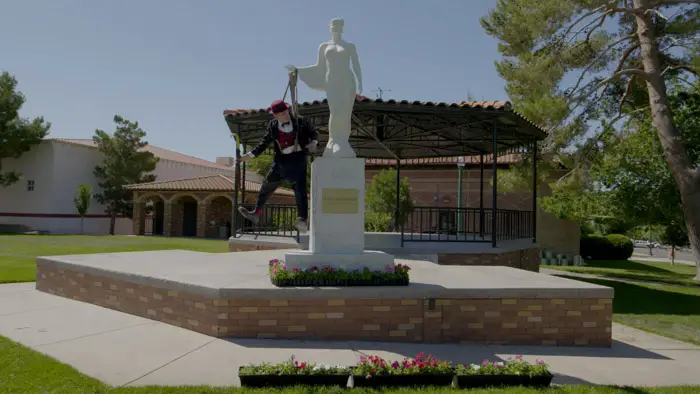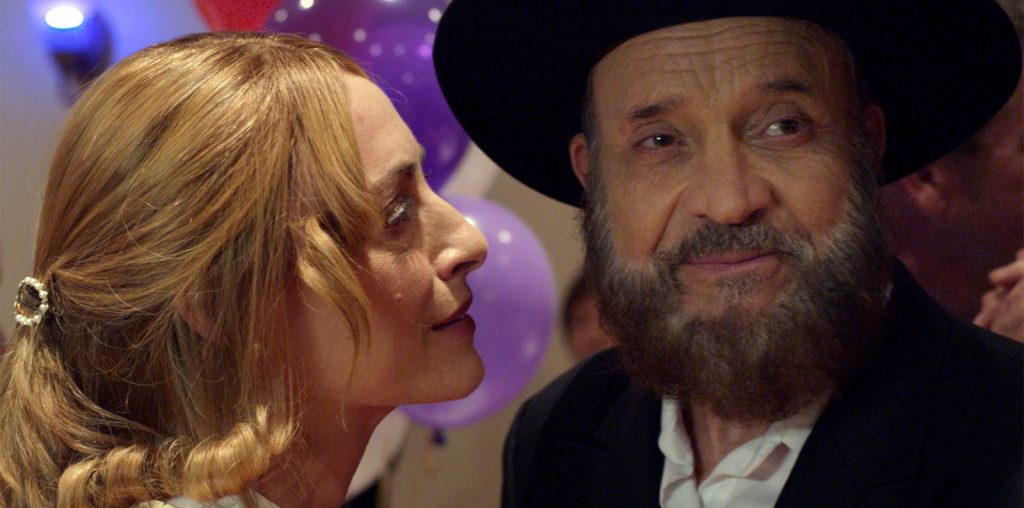
Based on the title, Popovich: Road To Hollywood, one might reasonably assume that it is a documentary about the rise of some long-forgotten celebrity. However, the film, written and directed by Gregory Popovich and Mike Thompson, is a narrative comedy that intentionally harkens back to comedy classics of yesteryear, the kind that Harold Llyod and Charlie Chaplin made famous. This extends to the look of the main character himself.
The title character Popovich, played by Gregory Popovich, dresses like The Tramp and does similar vaudevillian acts. However, the circus he works at only wants him to be a clown and get in the face by a pie. This drives him crazy, and he messes up during a performance and quickly gets booted. So, Popovich decides to follow his dreams and become a star in Hollywood.
However, after getting kicked off a bus, Popovich winds up in a small town and, through a series of mishaps, destroys a statue of the local heiress, Susan Meglopolos (Robin Barcus Slonina; odd note: the character is credited as Mrs. Meglopolos, which makes little to no sense given her arc). The judge orders the man to work at a local restaurant (the owner lost a bet) to make money to repay the damages done to the statue by the end of two weeks. But, of course, the restaurant does not go well, namely because of Popovich’s penchant to be kind to every animal he meets.

“…Popovich winds up in a small town and, through a series of mishaps, destroys a statue…”
However, Sarah (Shannan Calcutt), potentially the only soul to understand Popovich, gets him a job with a construction company. It goes about as well as imagined. While courting Sarah, Popovich learns of a movie production coming through town and decides this is his shot. All the while, he is trying to be nice to everyone in the city and help them realize their dreams. Does Popovich finally find his place in the world?
There is a lot to really enjoy and like about Popovich: Road To Hollywood but a few nagging and quite frankly odd elements prevent it from greatness. For one, when in the bloody hell does this film take place? Most of the characters dress circa 1925, but there are TVs, VCRs/DVD players, KISS impersonators, and some modern cars. This lack of cohesion simply confuses audiences, as instead of inviting them into the story’s world, it is a barrier, as one is trying to piece it together and make sense of it all, which is a futile task.
Going off of the lack of world-building, the judge gives Popovich two weeks to pay for the repairs needed to the statue. I don’t care when this is set. In what world is that enough time to make the thousands (possibly hundreds of thousands) dollars needed for said repairs? It is an arbitrary time limit that once again hampers any potential world-building or internal logic.

"…intentionally harkens back to comedy classics of yesteryear..."


